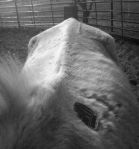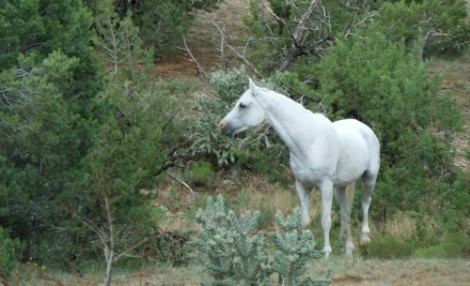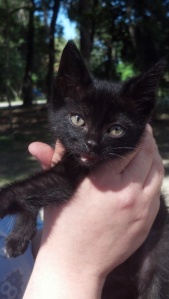 Thank you so much for following this blog about animals and animal communication! I wanted to let you know, however, that I have moved the entire blog to my main website and that is where new posts appear. I hope you will hop on over there to catch up and sign up to follow me at that location. And if you have a blog too, please put that in the comments there so I can check it out. Thanks so much!
Thank you so much for following this blog about animals and animal communication! I wanted to let you know, however, that I have moved the entire blog to my main website and that is where new posts appear. I hope you will hop on over there to catch up and sign up to follow me at that location. And if you have a blog too, please put that in the comments there so I can check it out. Thanks so much! 
Archive for Uncategorized
Hello, Blog Followers!
Help! I’ve Been Relocated!
From here on out, my blog posts will now appear on my main web site: http://www.herbsandanimals.com/ If you’re subscribed or following me, please go there and resubscribe, I beg you! All this is being done by experts who say I should have everything in the same place, etc. for better SEO results… and all that kind of thing. Beats me. At least all former blog posts, with pictures and comments, have transferred over there successfully, so any ‘conversations’ that may be going on right now (like using Crest toothpaste for sarcoids on horses) should be readily available at the new URL address. Thanks for following, and I hope you’ll keep it up. Leta
Blotched, Botched, or Blessed? One Indian Pony’s Amazing Journey
Lucky was named Lucky because he was dumped in the desert on the Mexican border seven months ago with about 40 other half-dead horses. How this could possibly be “lucky” sounds like a mystery, I know, but had his trailer-load of horses bound for slaughter in Mexico crossed that border, what little meat there was left on Lucky’s emaciated body would now most likely be digesting in the gut of some person in France… or flowing along the rivers of waste below the city of Paris. A noble equine life wasted.
The horses were dumped because several had a disease known as strangles, which can be a death sentence for horses, is highly contagious, and is certainly not acceptable for animals intended for human consumption. It was no doubt far cheaper for the hauler to release them into the desert than to try to sell them or park them somewhere.
We don’t know the whole story, and surely many of these horses perished, but Lucky was picked out of the herd in a holding pen by a teenage girl as a “gift” from a benefactor who often rescued some of these poor critters.
This girl herself had a rare gift with horses,  and she must have seen some spark in the eye of this little horse the day she chose him,
and she must have seen some spark in the eye of this little horse the day she chose him, ![]() even though that “eye” reflected such poor health and resignation.
even though that “eye” reflected such poor health and resignation.
Supposedly Lucky was only six, so that was in his favor. And he didn’t have strangles, so that was a double-plus. So off he went for rescue and rehab at the girl’s family’s stables, where they regularly took in as many of his kind as possible, brought them back to life, and placed them in good homes.
Fast forward to July of 2012 when Lucky arrived in Nambe, New Mexico, just north of Santa Fe, and was picked up by his new owner, my dear friend Cindy. Cindy had been looking for an appropriate companion for her only-horse, Nova, and, once again, there was just something about Lucky’s pictures that made her staunchly committed to giving him a permanent, forever home. He had been through months of rehab with his rescuers, Cindy’s friends, and had even recently survived a life-threatening round of severe colic. But Cindy never waivered. She was absolutely, positively sure that he was the one for her and her four-year-old mare, Nova.
Cindy began researching the little guy, posted pictures of the strange markings on his left side, and thereby learned much about his probable heritage.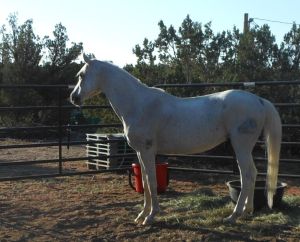 She found out that these marks are known as “blotch brands” and are Navajo in origin. (Cindy says they should be called botched brands because they are so messed up–no doubt due to improperly restraining the horse during branding.) The hip brand traditionally has three overlaid images which reflect the tribe, the land, and the family of the horse, so it’s easy to see how that brand alone could easily be “smeared” and hard to read. There are also often many other smaller markings/blotch-brands on a Navajo pony, of which Lucky has at least two, one of which looks like a face.
She found out that these marks are known as “blotch brands” and are Navajo in origin. (Cindy says they should be called botched brands because they are so messed up–no doubt due to improperly restraining the horse during branding.) The hip brand traditionally has three overlaid images which reflect the tribe, the land, and the family of the horse, so it’s easy to see how that brand alone could easily be “smeared” and hard to read. There are also often many other smaller markings/blotch-brands on a Navajo pony, of which Lucky has at least two, one of which looks like a face.
One Navajo horse trainer offered further description: “If you can ride him bareback with a halter, and he can’t back up, then he’s off the Navajo Reservation.” Later, responding to Cindy’s horrified message that this horse had been sold for slaughter, probably for $100 or less, he said, “You haven’t seen poor until you’ve been on the rez.”
Due to the drought, hay prices, and the economy, horses are being given away, sold for slaughter, or just turned loose these days by folks who are far more prosperous than those on the rez, so no, it is no wonder that Lucky ended up on that truck bound for Mexico. Still, I like to imagine little children on him, riding bareback with just a halter, and that his family was bereft to give him up. But that $100 sale price to them probably meant at least a few months of staples for their larder. It’s hard for any of us reading this to relate to that, but it certainly is a fact of life for many, and definitely for many of those among the Native American population of our country.
So Lucky lucked out and finally made it “home,” just one week ago. He was shaking all over as we started to unload him, but when he stepped out of the trailer, all of that went away and one could feel a total sea change in his being: he KNEW. We humans have epiphanous moments, why shouldn’t the animals? We could feel Lucky registering that this was his home, forever. It felt familiar being back in the high desert of New Mexico, and he immediately went into a place of total trust, relaxation and appreciation for the patient woman who stood murmuring quietly by his side.
In the last seven days, Lucky has flourished. He is on ten acres with one to two hours of at-liberty time each day to move freely, test the legs he hasn’t had a chance to use in a long, long time, and to graze on familiar stubbly, native desert grasses. But he also has his own pen with plenty of hay and feed. He is so thankful for this bounty that he went back into his pen, unprompted, all by himself, the first day he was turned out, after only an hour and a half. And he glues himself to Cindy whenever she is with him, following her from chore to chore, muck to muck. He knows. He had an epiphany. He understands and is grateful.
Other things Cindy has learned: Many of the rez horses date back to the original Arabian breed of ancient lore—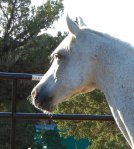 the type that slept in tents with the Bedouins. A rare type these days because they are so calm and devoted, not as “hot” as many of their modern-day counterparts. Considering Lucky’s head, conformation, size and disposition, he certainly fits this mold. According to her vet, he is 11 years old, not six, which is just fine with her and will only help stabilize her four-year-old filly’s adolescent ways. And he has a spirit that can survive things most of us don’t even want to think about.
the type that slept in tents with the Bedouins. A rare type these days because they are so calm and devoted, not as “hot” as many of their modern-day counterparts. Considering Lucky’s head, conformation, size and disposition, he certainly fits this mold. According to her vet, he is 11 years old, not six, which is just fine with her and will only help stabilize her four-year-old filly’s adolescent ways. And he has a spirit that can survive things most of us don’t even want to think about.
Lucky has been renamed “Sharif” (pronounced “Shar-EEF”) honoring all the traits he bears from his long-distant ancestry: nobility, honor, gentleness. He still needs to gain more weight and rebuild muscle, but no doubt one day soon Cindy will be able to find out if he can be ridden “bareback, with just a halter” (though by then she will have taught him to back up!).
Sharif is one of the lucky ones. So many horses, dogs and cats are being discarded these days due to lack of resources to take care of them. I hope Sharif’s story will inspire others like Cindy to step up and rescue or sponsor just one animal who would otherwise be lost. In this case, I don’t know who lucked out the most: Sharif or Cindy. She agrees.
Animal “Walk-Ins” – A Different Kind of Reincarnation
What’s going on? The number of reincarnation cases I’ve been getting these past few weeks has been mind-boggling. Maybe it’s just a reflection of the fact that more people are believing in the fact that souls reincarnate… including animal souls. Or maybe it’s because more souls are striving to evolve more quickly by existing on our planet (which I have read somewhere). Whatever the reason, many of us are searching like mad for those special animals we have lost, hoping they come back to us SOON, so that we can continue to share this lifetime together.
To say the least, this has been a very interesting time, and one of the aspects of reincarnation that has been coming to the forefront for me lately with the animals is “walk-ins.” Moose/Merlin, to the left is a perfect example.
But first, for those who may not be familiar with the term “walk-in” as it applies to reincarnation, it simply means that one soul trades places with another soul and takes over that soul’s body, with both souls in agreement. Apparently this is more easily done when there has been an accident or a near death experience and the soul previously inhabiting the body is ready to leave. Usually one soul replaces the other, but sometimes both souls “share” the same body–again, by agreement. And, at least as far as my understanding goes, the souls are usually members of the same “soul group.”
I never thought about how this might apply to animals until a few years ago when I had my first walk-in case where a deceased dog entered another dog who was at a rescue sanctuary. The person involved was very drawn to the particular rescue dog in question, so the soul of her deceased companion zipped right in–by agreement–and co-inhabited the body of the rescu’ee, who was four or five years old at the time and was happy to share her body but not ready to leave. This was my first up-close-and-personal insight into this phenomenon and the fact that it occurs with animals as well as humans. In this case, how the departed spirit chose to display her traits and prove who she was to her person was most fascinating and very specific.
But back to Moose/Merlin. I had an inquiry (through this blog, actually) about a kitten who had come to the attention of a woman whose cat, Merlin, had crossed the Rainbow Bridge not long before. Merlin had been a beautiful black cat with great wisdom. The new kitten was black but, well, he had a lot going on. He had obviously been through major trauma and had some injuries, including a broken jaw. He was not even old enough to be weaned but had somehow found his way into our subject’s life and heart. She of course was not looking for a Merlin replacement but took the kitten in to help rehabilitate him.
And so began the story. Shortly after taking him in, she began to realize there was something special about this kitten and the way they had come together, even though he was born before Merlin departed. The kitten also exhibited a few very particular kitten traits that had been predominant in Merlin when he was a wee lad. Too much to ignore. So, while she called him “Moose” starting out, our reader feels sure that Moose is Merlin, and came back to her as a walk-in, in spite of great odds and life-threatening circumstances. And I happen to agree.
This is how it often happens. Seemingly by accident. Not in ways one could predict. If we are meant to be together, we souls have a divine knowing and understanding of how to make that happen. And sometimes, if all else fails, it’s through coming into a body that already exists, trading places, and settling down into the niche we’re meant to be in–with the person who’s waiting for us.
Learn How to Talk to Animals – A Practical Guide for a Magical Journey
Yes! My book by that same name is finally up on Kindle at http://www.amazon.com/dp/B007BSOLWW! It should be in print on Amazon soon. AND, if you have a Kindle e-reader you can “borrow” it for free through Kindle’s new ADP Select program.
If you read it, will you please leave me a review? Here’s the book description:
Whether you aspire to be a professional animal communicator, want to talk to your own animals, or simply wish to understand animal communication better, this unique book is for you. Leta Worthington has distilled her 25 years of experience into an easy-to-read yet complete guide. Learn How to Talk to Animals answers commonly asked questions like: “What is animal communication?” and “How does it work?” You’ll find insights as to why opening the heart and learning to use the brain differently are important for ensuring success, and practical instruction for expanding your subtle awareness. Many other compelling topics, such as the dos and don’ts of animal communication, are covered as well, but if you’re eager to dive in you can skip to Part Two and start practicing with Leta’s step-by-step guidance. Verbatim case histories and fascinating true stories will spur your confidence and enthusiasm. This book is a one-stop-shop for anyone ready to experience the magical journey of talking to animals.
And stay tuned for my next book on animal afterlife and animal reincarnation. Thanks for visiting!
How to Get Health Insurance for $40 a Month . . . When you Can’t Afford, Don’t Have, or Can’t Get Health Insurance!
“You have nothing if not your health.”
I don’t know who first said that, but you know just how true that is if you’ve ever had a chronic disease or ongoing pain. Quality of life is everything . . . and unfortunately having health insurance doesn’t ensure it. Only good health does.
If you could get health insurance for $40/mo., would you get it?
Of course you would. Even if it were a stretch, just cutting out a few cups of joe from your favorite gourmet coffee shop every month would cover this amount.
If you can’t get or can’t afford health insurance, you can ensure your good health by:
- eating healthy food,
- getting plenty of rest, and, of course,
- never having any stress.
That’s the supposed formula. And maybe it used to work. But in present day circumstances, especially with the toxins in the environment and food we eat, this formula doesn’t really work any more.
What can you add to this picture that will ensure the best health possible and will improve your quality of life?
Super Blue-Green Algae. For $40 bucks a month. In a convenient one-month’s supply of one-a-day Simplexity “Essentials” packets. 
Why Super Blue-Green Algae and not just a multi-vitamin? Because Super Blue-Green Algae is one of the few whole foods you can get these days that is wild-crafted, just as Nature created it, and is a complete organic nutrient in a highly digestible form.
The human body does a completely different thing with food in its natural state than with something man-made, even if from organic ingredients. It does not utilize a Vitamin C capsule like it does an orange. Period. So a vitamin pill is not going to change your health or your life. Super Blue-Green Algae can. Really!
You can read all about Super Blue-Green Algae Essentials HERE, but the fastest way to get your $40/month health insurance is by going HERE and ordering a one-month supply, in convenient daily packets, of Super Blue-Green Algae, and seeing for yourself how this miraculous, natural food enhances your quality of life. Most people report a noticeable, positive increase in energy and well-being within the first thirty days, many much sooner.
There is a 90-day money-back guarantee on all Super Blue-Green products, so you have nothing to lose. $40 a month, really, can do far more for your health and for your quality of life than having an insurance policy.
Take the 90-day challenge and ensure your health! You’re worth it!
Live abroad? Super Blue-Green Algae is available to some countries overseas now too. Go HERE for more information.
Dry Eye Symptoms in Chihuahuas
Well . . . not pretty. Read: eye infection.
That’s what happened to my precious Frida when I first got wind of the fact that she is a bit prone to the “dry-eye” symptoms that some Chihuahuas exhibit.
Naturally, I was out of town. The first time ever since getting her as a pup, so it was my pet-sitters who had the dubious distinction of getting Frida through what was actually a pretty serious medical event. Three trips to the vet, three prescriptions, drops every two hours, and a week later, and Frida was doing okay and “out of the woods,” as they say, in terms of the safety of her right eye. On the other hand, having me leave her — she, who is glued to my right hip — plus being with new people, plus having to wear a Queen Anne’s collar so she couldn’t scratch her eye ………….. well, you can imagine. She was one sad little puppy.
Frida’s problem began with compications due to our high desert climate: namely wind and dust. Her eye became so dry and irritated that an infection was able to set in, and her eye quit producing tears.
But what I learned from this was that Chihuahuas are prone to dry-eye symptoms (or syndrome), so many of them may have this problem sooner or later. The message being: Keep a close eye on your Chihuahua’s eyes!!
Fortunately, in our case, Frida recovered beautifully and does not have a chronic syndrome requiring daily eyedrops. I do monitor her eyes for tear production regularly, however, and would recommend doing the same if you have a Chihuahua. Also, I think one reason Frida fared so well through her eye trauma was due to the excellent nutrition she gets, the key factor being Super Blue Green Algae. Every day Frida gets a little raw meat plus high-grade kibble, but also probiotics and micro-nutrients all wrapped up into one — go here to check it out:
formula.http://www.herbsandanimals.com/simplexityhealth/acidophilus.html
(Order as a “PC” and get a 20% wholesale discount. And actually, in Frida’s case, she splits her capsule with her buddy, Tucker, because she only weighs 5 lbs. so doesnt even need a full capsule! So if you have a small dog, this added “health insurance” is super affordable!)
Having a good balance of healthy flora in the system is known to be the first line of defense in fighting infection, so Frida’s little eye invaders didn’t stand a chance!
BUT! Taking even greater precautions, I ordered these goggles  which Frida now wears on our daily walk/runs (I walk, she runs). These definitely help keep out the wind and dust in those little low-to-the-ground eyes she has! All she needs now is an aviator cap, don’t you think?!
which Frida now wears on our daily walk/runs (I walk, she runs). These definitely help keep out the wind and dust in those little low-to-the-ground eyes she has! All she needs now is an aviator cap, don’t you think?!
Animal Communication Ethics – When to Cross the Line
 Several years ago, a farrier in one of my beginning animal communication classes reported that a draft horse at one of the barns he worked at had been talking to him every time he was on the premises, telling him about the abuse she was experiencing. He had never heard of animal communication — certainly never studied it — so he thought he was going crazy and of course had no idea what, if anything, to do about this.
Several years ago, a farrier in one of my beginning animal communication classes reported that a draft horse at one of the barns he worked at had been talking to him every time he was on the premises, telling him about the abuse she was experiencing. He had never heard of animal communication — certainly never studied it — so he thought he was going crazy and of course had no idea what, if anything, to do about this.
Likewise, one of my good friends, Kara, once found herself caught in a dilemma. Should she or should she not tell the owner of one of the horses at her barn what that horse had been telling her for two weeks?
One of the “rules” most of us animal communicators follow, from a code of ethics for the profession developed by Penelope Smith many years ago, reads:
“Unless someone is in great immediate danger, I provide assistance through telepathic communication with nonhuman animals only where requested, so as to honor individual choice and privacy.”
(You can read the entire Code of Ethics HERE.)
So how do you know when to “cross the line?” Here’s my friend Kara’s story.
Kara was making nightly trips to the barn where she was boarding her mare, Sasha, in order to tend an injury the mare had incurred. It was mid-winter – cold, dark and dreary by the time Kara reached the barn. She usually found herself alone as she sat in the barn aisle, patiently waiting while her mare’s foot soaked in a bucket.
Another boarder in a stall nearby, a gelding we’ll call Jim, began calling to her every night, “Help me! Please tell my mom I need help.” Kara ignored Jim as politely as she could, because she had studied animal communication so was well aware of the above stated “rule.” And although she was quite gifted in animal communication, Kara had no intention of practicing it professionally. But being the compassionate animal lover and horse person that she was, Kara finally succumbed to Jim’s pleas and engaged with him enough to hear what he had to say.
Jim told Karen “I can’t breathe!”, and she “saw” and “felt” something in his throat. The message was very brief but very strong, and Karen felt certain she was hearing Jim accurately.
Kara didn’t really know Jim’s owner, Sally, but she had noticed that Jim had been having problems that interfered with his training. He could not be worked for any length of time, or very hard, without seriously overstressing him physically. But nobody could figure out what was wrong. Kara was also pretty sure that Sally was the last person on earth who would be open to hearing that her horse had “talked” to someone — anyone — and told them what was wrong with him. But Kara’s impressions from Jim were so strong that she decided to approach Sally and tell her what Jim had said to her. She figured she had nothing to lose.
“I know you’re going to think I’m crazy …,” she began, and she then outlined to Sally what Jim had told her. Sally glared, Kara persevered. She encouraged Sally to have Jim scoped, a simple inexpensive procedure, just in case there was in fact something in his throat. Sally did not respond and stormed away. But a few days later, saying nothing to Kara, she had her vet out, they scoped Jim, and, sure enough, he had a large benign tumor growing in his throat. The tumor was one that could be removed fairly easily, Jim recovered perfectly, and the problems with his training were solved.
This is a perfect example of how and when it is okay to “cross the line” ethically and hear out what an animal is trying to tell you, even if you don’t have permission. If the animal feels they are in trouble or danger, it is the humane thing to do. You may or may not be able to help bring a solution to their problem, but you can at least reassure them that you understand, and that you will do anything you possibly can to help them. And, believe it or not, sometimes it gives an animal a huge sense of relief just to know they have been heard. Some of them need to vent just like we do!
Saying Goodbye – Ode to Annie and Pilar
HOW DO WE KNOW, AND WHOM CAN WE TRUST
TO HELP US KNOW WHEN TO DO WHAT WE MUST?
TO LET GO AND LET GOD TAKE OUR LIFELONG FRIEND,
AND TO KNOW IN OUR HEARTS THAT WE’LL SEE HER AGAIN.
Blessings to you, Annie and Pilar, on this last day of Pilar’s earthly path.
Happy Trails, Dear Pilar. May you go with God.
